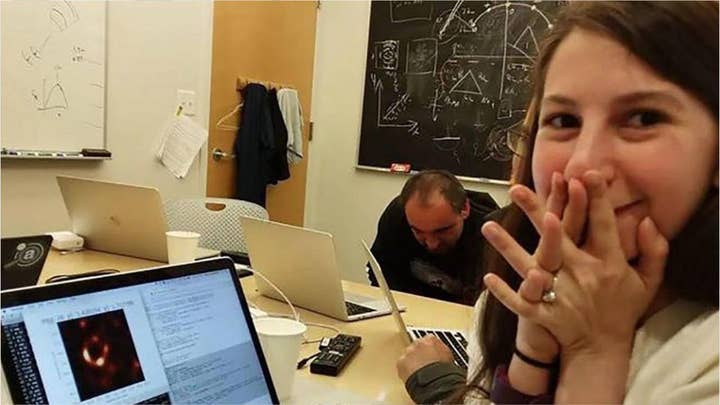Scientists reveal the first-ever image of a black hole
Former NASA astronaut Mike Massimino explains what can be learned from the groundbreaking discovery.
This week’s alleged image of a black hole purportedly at the center of the M87 galaxy is understandably being hailed as evidence for one of the most astonishing and controversial phenomena predicted by Einstein’s century-old theory of gravity.
But if it is indeed what its authors claim, then the donut-shaped portrait also reveals how very little about the cosmos we truly understand and perhaps ever will.
Many years ago, while studying for my doctorate at Cornell, I was struck by how fundamentally different astronomy is from other sciences. In physics, chemistry, geology, biology – you name it – we can usually lay our hands on the objects of our curiosity and bring them into our labs for controlled, close-up scrutiny.
4 LESSONS HUMANITY LEARNED FROM THE NEW BLACK HOLE IMAGE
With the exception of some moon rocks and telemetry from spacecraft exploring our immediate neighborhood, the objects studied by astronomers are typically unreachable and can be understood solely by analyzing the light they emit and absorb. As the English physicist and Nobel laureate Sir William Bragg once observed, “Light brings us the news of the Universe.”
The image published this week is theorized to be that of a black hole more than 300 quintillion miles away – far, far beyond our reach. Moreover, the image is not a photograph, but a simulated, false-color visual representation of data collected from eight worldwide radio telescopes – telescopes that detect radio waves, not visible light – and engineered by a convoluted computer algorithm.
Above all, the image does not reveal an actual black hole, but the electromagnetic chaos astronomers imagine to be swirling around one. The M87 black hole, if it exists, appears as a — well, black spot. As in black box. As in obscure mystery.
In Einstein’s famous theory of general relativity, you see, black holes arise as singularities, the mathematical term for pinpoint-like infinities. That’s why black holes are believed to exist wherever there is so much matter it collapses down to a mathematical point under its own weight, creating an infinitely strong gravitational force. A force so powerful not even light can resist its pull.
Also according to the theory, we can never actually observe a singularity – a naked singularity, as we call it – because it’s inevitably clothed in a bubble-of-no-return, the outer shell of which is called the event horizon. If you were ever lucky (and unfortunate) enough to enter such a bubble-of-no-return, Einstein’s theory predicts you’d see the future flash before your eyes just before being stretched to death.
If that seems like a rational, if scary, explanation of black holes, it isn’t, really. A singularity is an intriguing concept, and a scientifically fruitful one, but imagining it – something with no dimension that is infinitely large – is as impossible as imagining God.
And this week’s sensational image is certainly of no help. To the contrary, the perfectly shaped, perfectly sized, perfectly black donut hole merely rubs the mystery in our faces.
And there’s more.
Black holes, as it happens, aren’t the only opaque mysteries punching holes in astronomy’s worldview of the cosmos. I’ll mention just two others here.
The first one was called the missing mass problem when I was a young scientist. Today it’s known as the dark matter problem, referring to a mysterious kind of matter that does not give off any light. That’s a major bummer for a scientific discipline that relies on light from the heavens to know what it’s talking about.
The second one is known as the dark energy problem, a shocking discovery made in 1998 that I covered for ABC News. Dark energy is our name for an invisible substance we believe is causing the universe to accelerate outward, and about which we know virtually nothing. “If you’re puzzled by what dark energy is,” remarks astrophysicist Saul Perlmutter, who won the 2011 Nobel Prize in physics for co-discovering the cosmic acceleration, “you’re in good company.”
CLICK HERE TO GET THE FOX NEWS APP
Between black holes, dark matter, and dark energy, we now estimate that upwards of ninety-five percent of the universe is completely hidden from us – and might always be. If true, it means the entire discipline of astronomy – including Einstein’s vaunted theory – is based on an awareness of less than 5 percent of creation. In other words, as in this week’s stunning image, there is an enormous black hole in our understanding of what’s truly out there.
That’s today’s real headline. And cause for great wonder and astronomical humility.


